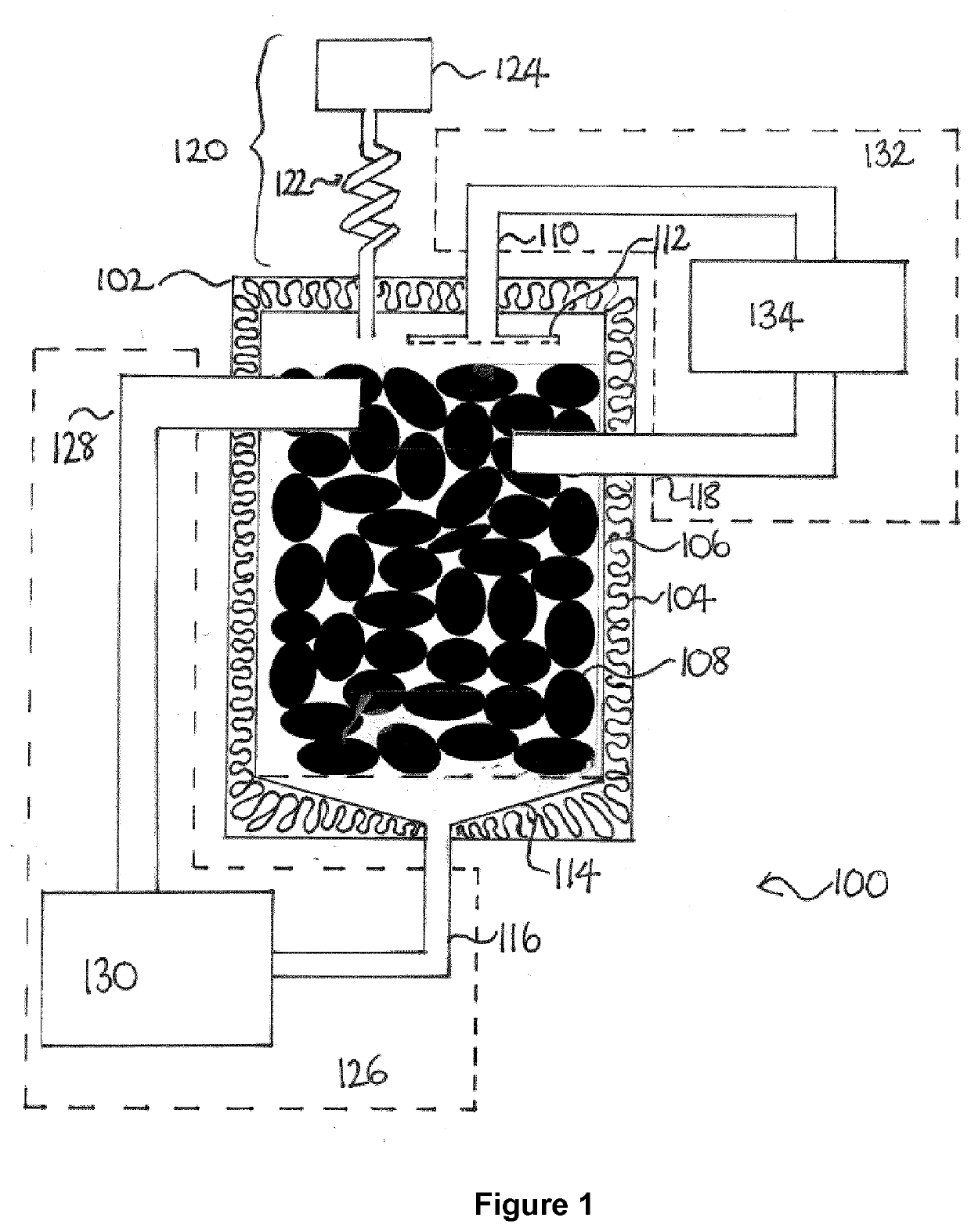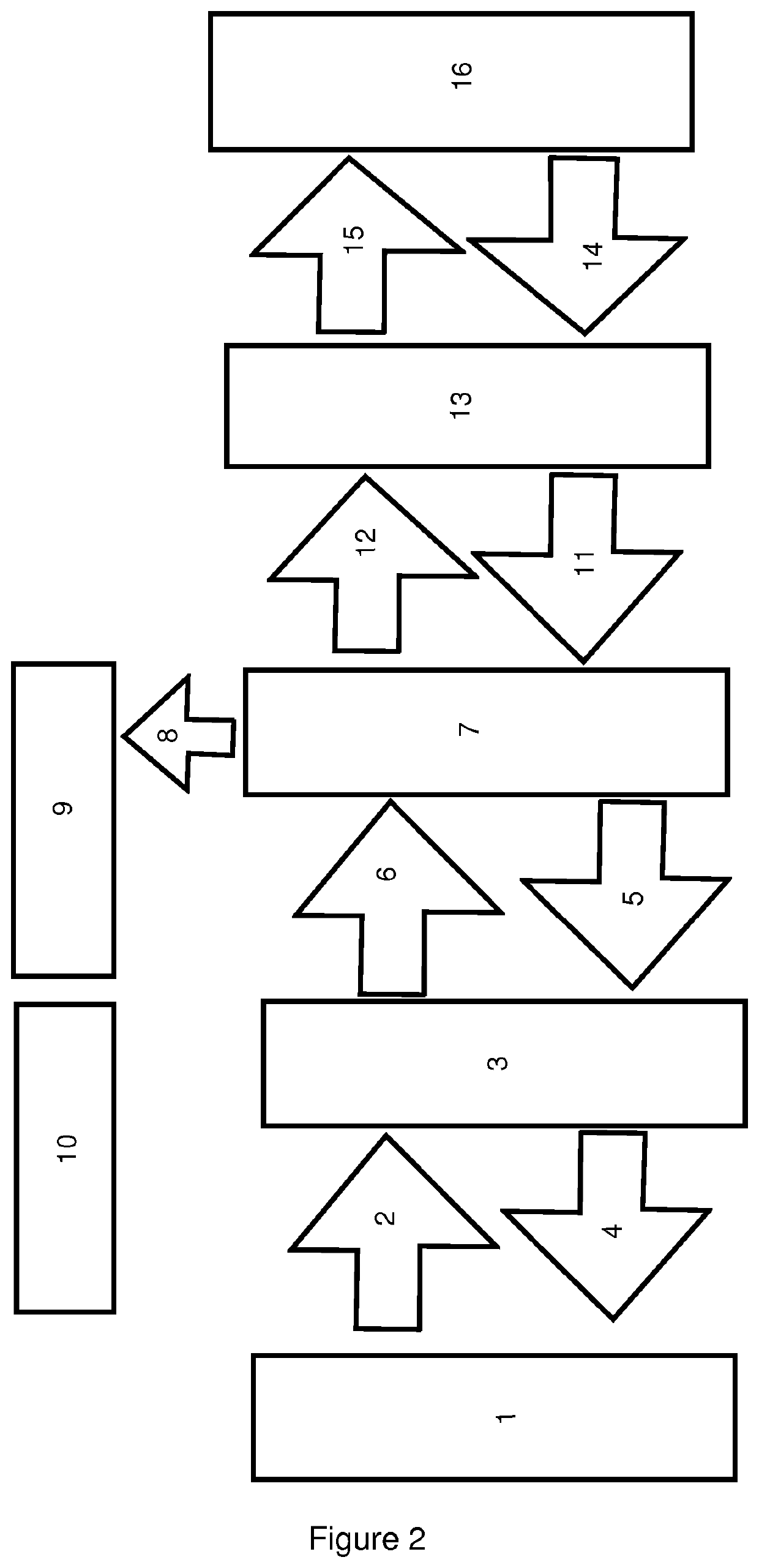Method and apparatus for heat storage
a technology of heat storage and heat exchanger, which is applied in the direction of fluid heaters, indirect heat exchangers, lighting and heating apparatus, etc., can solve the problems of increasing the cost of stored energy compared to the cost of energy used directly, and most solutions are expensive, so as to achieve efficient heating
- Summary
- Abstract
- Description
- Claims
- Application Information
AI Technical Summary
Benefits of technology
Problems solved by technology
Method used
Image
Examples
example 1
[0138]A concentrated solar power plant delivering thermal oil at 350° C. is used as a heat source. The thermal oil is passed through a counter flow heat exchanger heating and evaporating a heat transfer fluid with normal boiling point 300° C. The internal pressure in the reservoir and connected input / output systems are maintained below 0.01 bar through the use of a vacuum pump with a connection tube that is maintained at ambient temperature. The vapor pressure of the thermal oil at ambient temperature is typically of the order of 10−5 bar, resulting in very low evacuation of heat transfer liquid from the system, while maintaining a low residual air pressure. When the temperature of the heat reservoir is low, the total pressure in the system is low, equal to the vapor pressure of the heat transfer liquid plus the residual air pressure. At this pressure, the heat transfer liquid will evaporate at decreased temperature in the input system, thus able to maintain a relatively low return ...
example 2
[0140]A concentrated solar power plant delivering thermal oil at 350° C. is used as a heat source. The thermal oil is passed through a counter flow heat exchanger heating and evaporating linseed oil with normal boiling point 287° C. The internal pressure in the reservoir and connected input / output systems is reduced to around 0.01 bar prior to charging the reservoir with heat through the use of a vacuum pump with a connection tube that is maintained at ambient temperature. The vapor pressure of the linseed oil at ambient temperature is typically of the order of 10−5 bar, resulting in very low evacuation of heat transfer liquid from the system, while maintaining a low residual air pressure. When the temperature of the heat reservoir is low, the total pressure in the system is low, equal to the vapor pressure of the heat transfer liquid plus the residual air pressure. At this pressure, the heat transfer liquid will evaporate at decreased temperature in the input system, thus able to m...
example 3
[0142]A concentrated solar power plant delivering thermal oil at 350° C. is used as a heat source. The thermal oil is passed through a counter flow heat exchanger heating a heat transfer fluid with normal boiling point 300° C. which is maintained at 5 bar pressure in the said heat exchanger. The heat transfer fluid is heated to 345° C. at 5 bar in the heat exchanger, whereafter it is injected through a pressure reduction valve into the reservoir. The internal pressure in the reservoir and connected input / output systems are maintained below 0.01 bar through the use of a vacuum pump with a connection tube that is maintained at ambient temperature. Upon injection of the superheated heat transfer fluid, it partly evaporates at the reservoir inlet, and subsequently condenses on the coldest part of the reservoir. To prevent ambient air from building up in the reservoir (e.g. entering through small cracks in the encapsulation or leaky joints), a vacuum pump will continuously pump on the ch...
PUM
 Login to View More
Login to View More Abstract
Description
Claims
Application Information
 Login to View More
Login to View More - R&D
- Intellectual Property
- Life Sciences
- Materials
- Tech Scout
- Unparalleled Data Quality
- Higher Quality Content
- 60% Fewer Hallucinations
Browse by: Latest US Patents, China's latest patents, Technical Efficacy Thesaurus, Application Domain, Technology Topic, Popular Technical Reports.
© 2025 PatSnap. All rights reserved.Legal|Privacy policy|Modern Slavery Act Transparency Statement|Sitemap|About US| Contact US: help@patsnap.com


